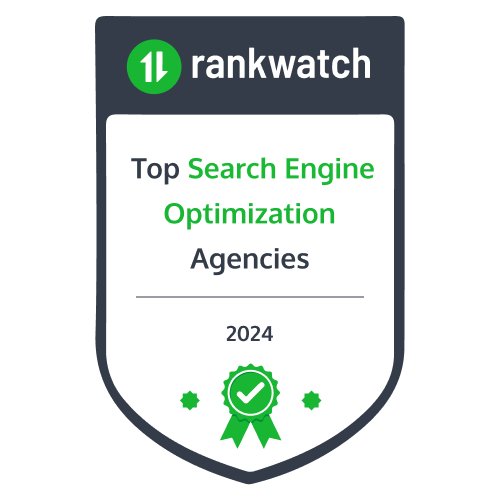Brand Boost: Marketing Strategies for SEO Dominance
In the ever-evolving digital landscape, the intersection of marketing strategies and search engine optimization (SEO) has become the nexus for brands aiming to establish a formidable online presence. Achieving SEO dominance not only requires a strong grasp of the technical aspects but also demands a strategic blend of marketing initiatives that resonate with the audience. This blog post will delve into the key marketing strategies that can elevate your brand and contribute to SEO dominance.
Understanding the SEO-Marketing Synergy
Before we delve into specific strategies, it’s essential to recognize the symbiotic relationship between marketing and SEO. While SEO focuses on technical aspects such as keywords, backlinks, and site structure to improve search engine rankings, marketing brings in the human element. Effective marketing strategies complement SEO efforts by enhancing brand visibility, driving traffic, and fostering engagement.
1. Content Excellence: The Foundation of SEO Success
Quality content stands as the bedrock of any successful marketing and SEO strategy. Beyond mere words on a page, content should resonate with your audience, answering their questions, solving their problems, and providing genuine value. Google’s algorithms have evolved to prioritize user satisfaction, making high-quality, relevant content a crucial factor in SEO dominance.
Invest in creating comprehensive, authoritative content that not only informs but engages. Long-form content tends to perform well, but it must be structured logically, incorporating headers, bullet points, and multimedia elements to enhance readability.
2. Social Media Amplification: Building Brand Authority
Social media platforms serve as powerful amplifiers for your brand’s message. Beyond sharing updates and posts, social signals contribute to SEO rankings. Establish a strong presence on platforms like Facebook, Twitter, Instagram, and LinkedIn. Use tools to remove unwanted objects from your social media visuals, ensuring a clean and engaging brand presence. Craft content that encourages sharing, comments, and overall engagement, signalling to search engines that your brand is not just present but influential. Additionally, use AI professional headshots to ensure a polished and credible presence across social media platforms.
3. Influencer Partnerships: Tapping into Trusted Networks
Collaborating with influencers within your industry can exponentially boost your brand’s credibility. Influencers have cultivated trust with their followers, and their endorsements can serve as powerful signals to both your audience and search engines. When influencers share your content or vouch for your products/services, it not only extends your reach but also enhances your brand’s authority in the eyes of search algorithms. In addition, influencers can organically increase attendance at your event, providing a direct connection to your audience and generating genuine interest in what you have to offer.
4. Strategic Keywords and Optimization: Aligning Marketing with SEO
Keyword optimization is the cornerstone of SEO, and integrating it seamlessly into your marketing materials is crucial. Identify and target keywords that align with your brand identity services and resonate with your audience. From website copy and blog posts to social media captions, strategic keyword placement ensures consistency and strengthens your brand’s relevance in search results.
5. User-Centric Website Design: Enhancing the User Experience
Your website is often the first point of interaction between your brand and potential customers. An aesthetically pleasing and user-friendly design is not only essential for conversion but also influences SEO. Google’s algorithms prioritize sites that offer a positive user experience. Ensure your website is mobile-responsive, loads quickly, and provides intuitive navigation. Additionally, incorporating customer feedback AI analysis can further enhance the user experience by allowing you to understand and act on customer preferences and feedback more effectively. This technology can help you make data-driven decisions to improve your website’s design and functionality based on actual user interactions and satisfaction levels.
6. Data-Driven Decision Making: Refining Your Approach
In the dynamic realm of digital marketing and SEO, relying on data-driven insights is indispensable. Utilize analytics tools like Google Analytics to track the performance of your marketing campaigns and SEO efforts. Monitor key metrics such as website traffic, bounce rates, and conversion rates. Analyzing data empowers you to identify what works, refine your strategies, and make informed decisions for ongoing brand growth.
7. Community Engagement: Building Brand Loyalty
Foster a sense of community around your brand. Actively engage with your audience through forums, comments, and social media. Building a loyal community not only strengthens your brand but also generates valuable user-generated content and discussions – elements that search engines value. A community-centric approach contributes to a positive online reputation, which is increasingly significant for SEO.
Conclusion
In the competitive digital landscape, achieving SEO dominance requires a holistic approach that integrates marketing strategies seamlessly. From content excellence and social media amplification to influencer partnerships, strategic keyword optimization, user-centric website design, data-driven decision-making, and community engagement, each strategy contributes to a comprehensive and effective brand-building journey.
By embracing these marketing strategies, aligning them with your brand’s unique voice, and continually adapting to the evolving digital landscape, you can position your brand for success in both search engine rankings and audience engagement. SEO dominance is not a singular destination but an ongoing journey fueled by strategic marketing initiatives that resonate with your audience and enhance your brand’s online footprint.




